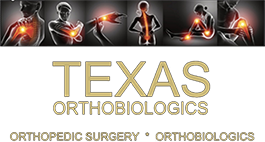We are trying to find the best in office, ultrasound guided solution for our patients who we treat with bone marrow derived mesenchymal stem cells. There is one device (Marrow Cellutions / Maxx-Regen) that proposes a technique that requires no centrifugation and injects 8-10 cc of marrow aspirated directly without further filtration, concentration of the marrow elements, or removal of red blood cells. There is alternative technique that takes the bone marrow aspiration and then centrifuges it in order to concentrate the stem cells, some growth factors and cytokines, and to remove the red blood cells. The end product is more concentrated that the initial aspiration….typically a 60cc bone marrow aspiration leads to a 6-10 cc bone marrow concentrate after the marrow aspiration is reduced to the final product.
Round 1 method
The Marrow Cellutions needle was used first and the Jamshidi needle was used 2.5 cm cephalad on the same side.
#1: We used the Marrow Cellution needle to obtain 9cc of marrow added to 1 cc of ACD-A. 0.5cc of this was sent to the lab in a blinded fashion for analysis.
#2: We used a regular multiport Jamshidi and a 10 cc syringe to draw to a total of 9cc plus 1cc of ACD-A, 1 cc at a time starting at 1.5cm subcortical and advancing deeper 0.5cm per 1cc draw to best match the Marrow Cellutions technique. 0.5cc was sent to the lab in a blinded fashion for analysis.
#3: We then did a bonus test…since the Jamshidi was already 4.5 cm deep in the posterior iliac crest..we used new 10cc syringes and drew to 7cc twice at each level…withdrawing 0.5mm each time until we had 55cc of marrow. We did this in the same cortical site and thru the same Jamshidi that we had previously used to do step #2…so this marrow aspiration was purposely subpar by our standards…we expected there to be blood dilution of this marrow aspiration. We sent 0.5cc to the lab for analysis.
#4: We then performed a 14 minute centrifuge using the Celling Biosciences protocol and disposable and the resultant product was 8cc of bone marrow concentrate. 0.5cc of this was sent to the lab for analysis.
SUMMARY OF RESULTS OF ROUND 1
Result 1: The Marrow Cellutions/Maxx-Regen needle did concentrate better that the multiport Jamshidi with a unicortical stick and otherwise matched syringe size and extraction technique. TNC in the Marrow Cellutions/Maxx-Regen needle was 38.8 million/ml for a total TNC of 349 million (CFU-F/ml and total pending) (posted when available). TNC in the Jamshidi unicortical technique was 25.4 million/ml for a total TNC of 229 million (CFU-f/ml pending). This represented a 53% increase in the MC needle over the Jamshidi for an non-contrifuged product.
Result 2: The multi-level single site Jamshidi approach with 47cc of marrow aspirated (remember this was handicapped from the study design initially) yielded a TNC of 8.7 million/ml for a total TNC of 409 million. Because we had no plan to inject 47cc of aspirate into a joint….we centrifuged it which yielded the results in point #3
Result 3: Post filtration, centrifuging, and concentrating, the TNC was 44.6 million/ml with a total of 356 million. The volume was 8cc of bone marrow concentrate.
Brief discussion:
The MC/Maxx Regen needle did appear to concentrate TNC better than a unicortical multiport Jamshidi….53% better in this white paper.
However, even the poor aspiration technique followed by centrifuge and concentration resulted in a higher total TNC than the Marrow Cellution/Maxx-Regen needle…..356 million versus 349 million.
CFU-s are pending and will be posted. This was all done on the same patient so we assume was no variance in marrow other than a scavenger effect from the Jamshidi needle being used after the MC needle.
Clinicians will have to decide if filtering the marrow, removing RBCs, and concentrating some of the growth factors and cytokines is a clinically useful goal for patients having these procedures. Since with current technique that process can only be done with a centrifuge based system….clinicians may be swayed by their answer to those questions.








Post a comment
Your email address will not be published. Fields marked (*) are mandatory.